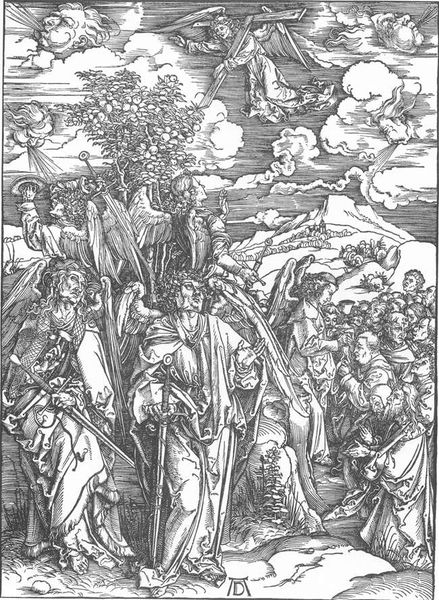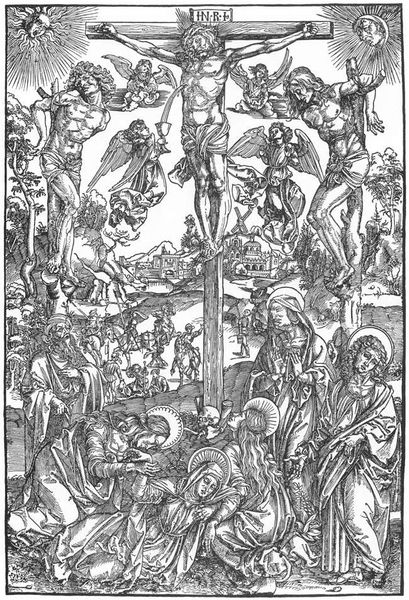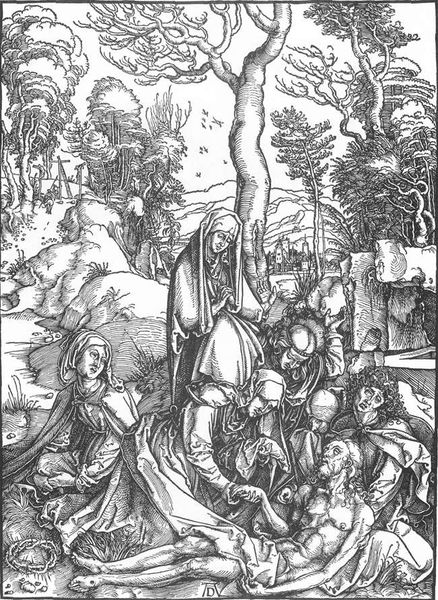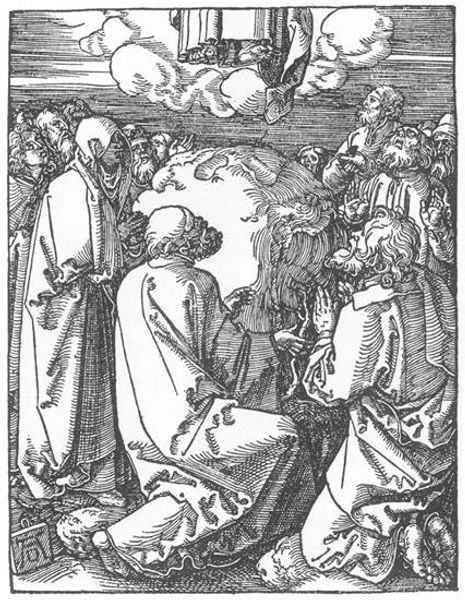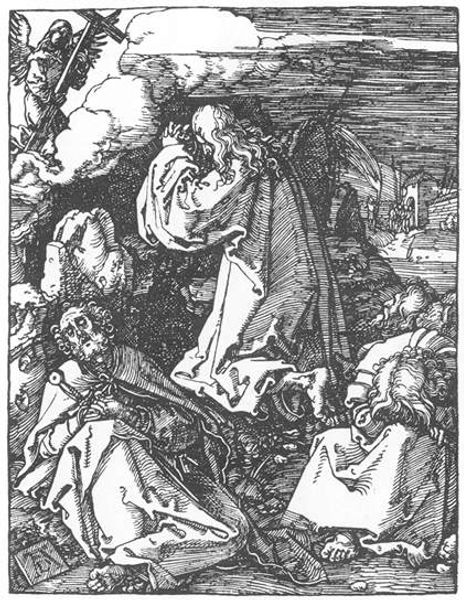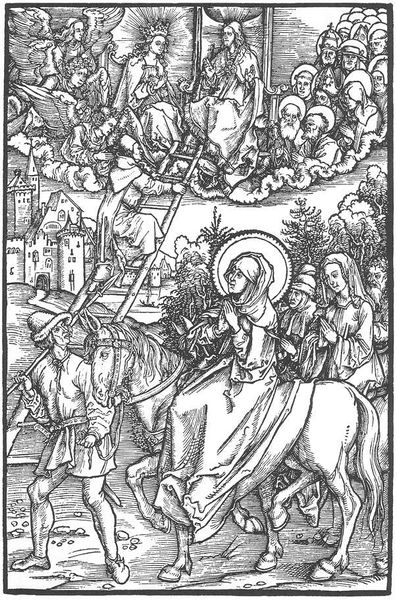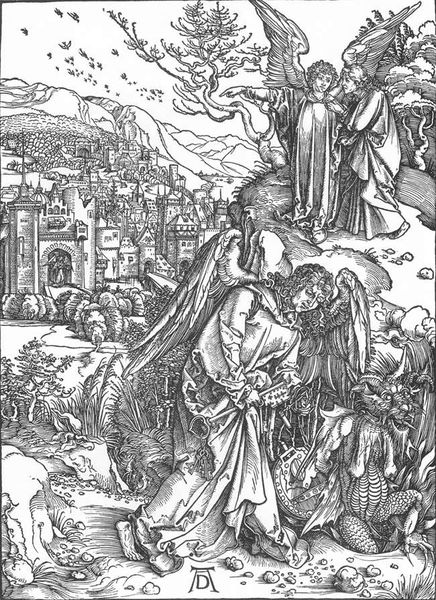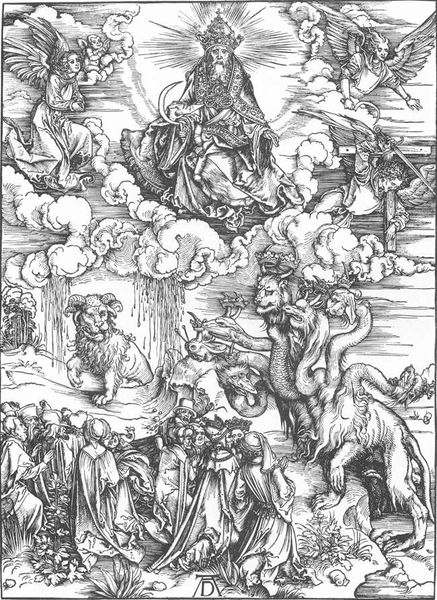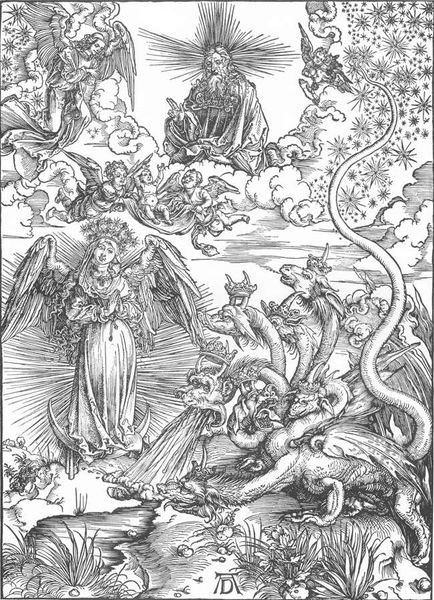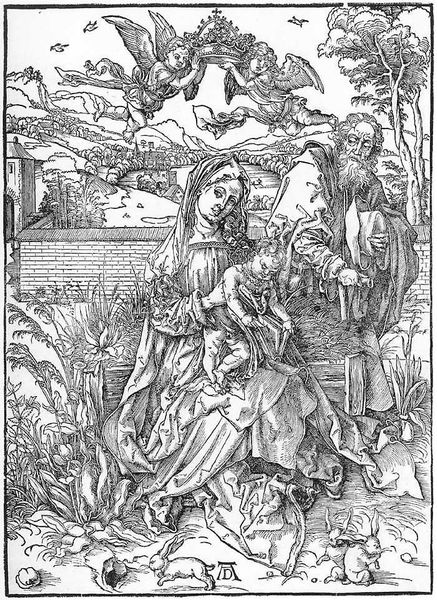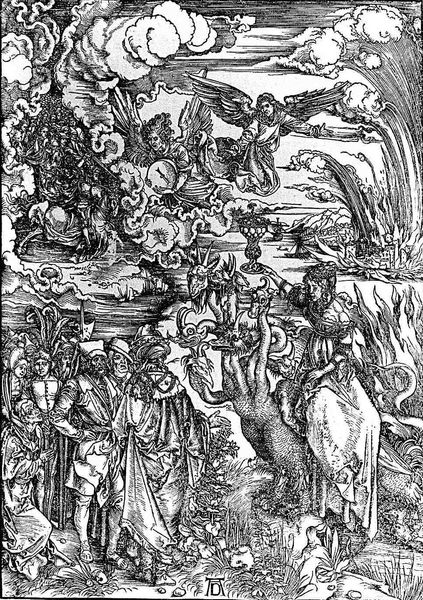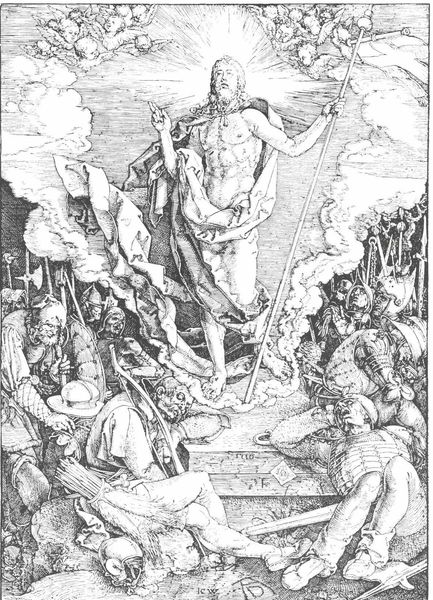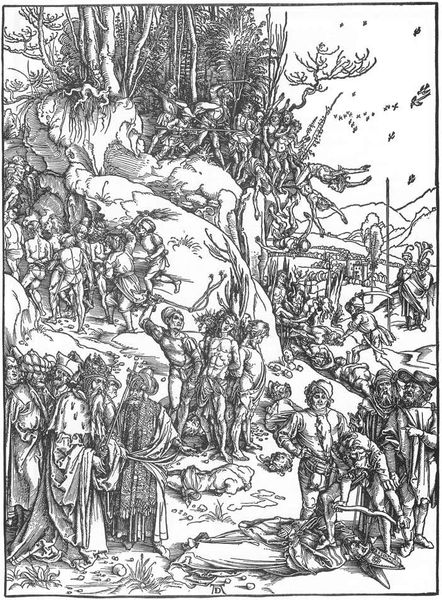
drawing, print, ink, woodcut
#
drawing
#
narrative-art
# print
#
pen illustration
#
figuration
#
11_renaissance
#
ink
#
woodcut
#
line
#
northern-renaissance
#
angel
Copyright: Public domain
Albrecht Dürer made this woodcut illustration in the early 16th century to accompany a printed edition of the ‘Revelationes Sancte Birgitte.’ Woodcut is a relief printing process: the artist carves an image into the surface of a wood block, leaving the design raised. This raised surface is then inked and printed, allowing for multiple impressions to be made. Dürer’s expertise is evident in the intricate detail and dramatic composition he achieved with this method. The black lines create a high contrast against the white paper, giving a sense of depth and texture to the many figures, from the divine figures at the top to the damned at the bottom. The level of detail Dürer achieved required significant labor and skill, reflecting the cultural value placed on craftsmanship and artistry in his time. It also speaks to the commercialization of art during the Renaissance, where printmaking allowed artists to reach a wider audience and participate in a burgeoning market for images. Ultimately, the material and process are essential to our understanding of the print’s cultural and economic significance.
Comments
No comments
Be the first to comment and join the conversation on the ultimate creative platform.
